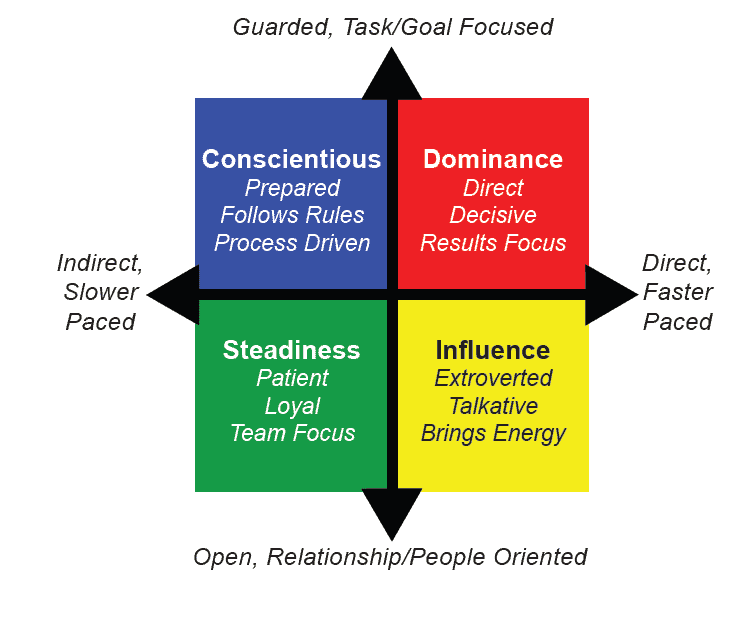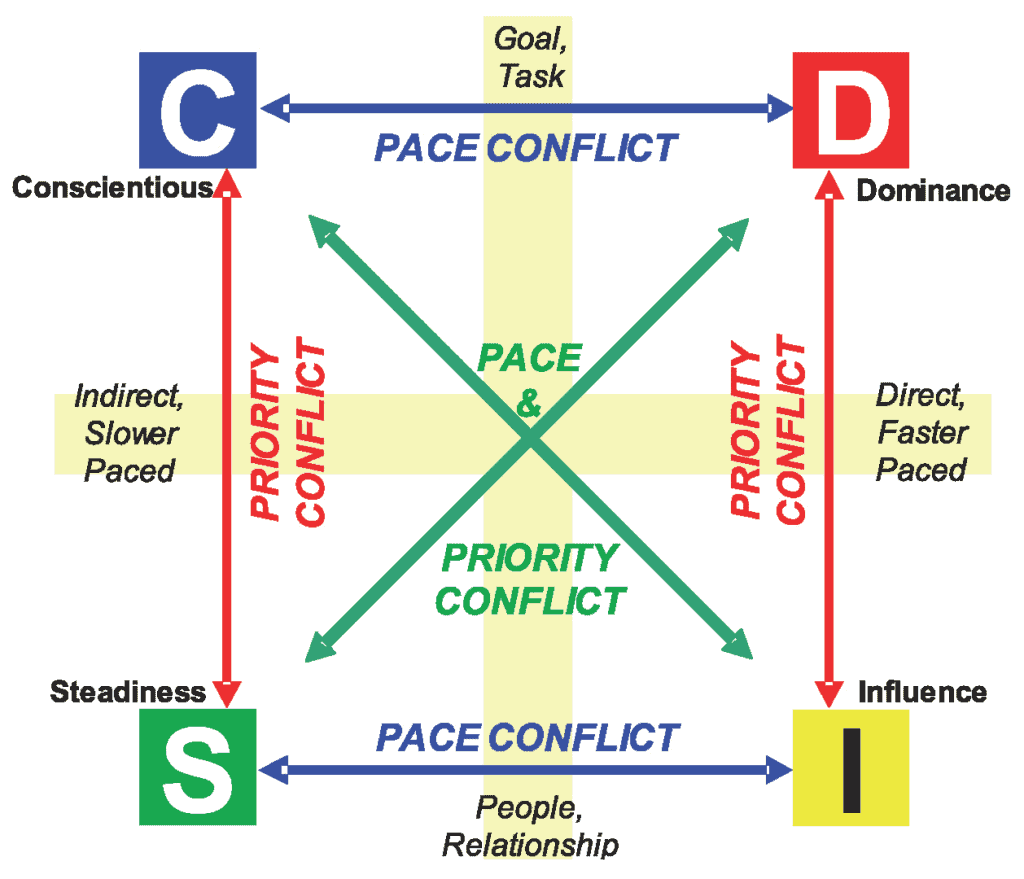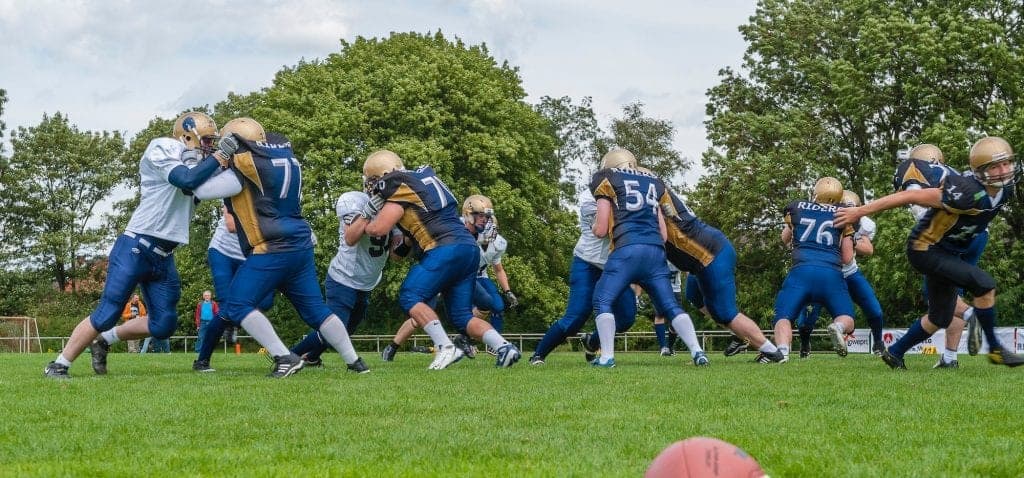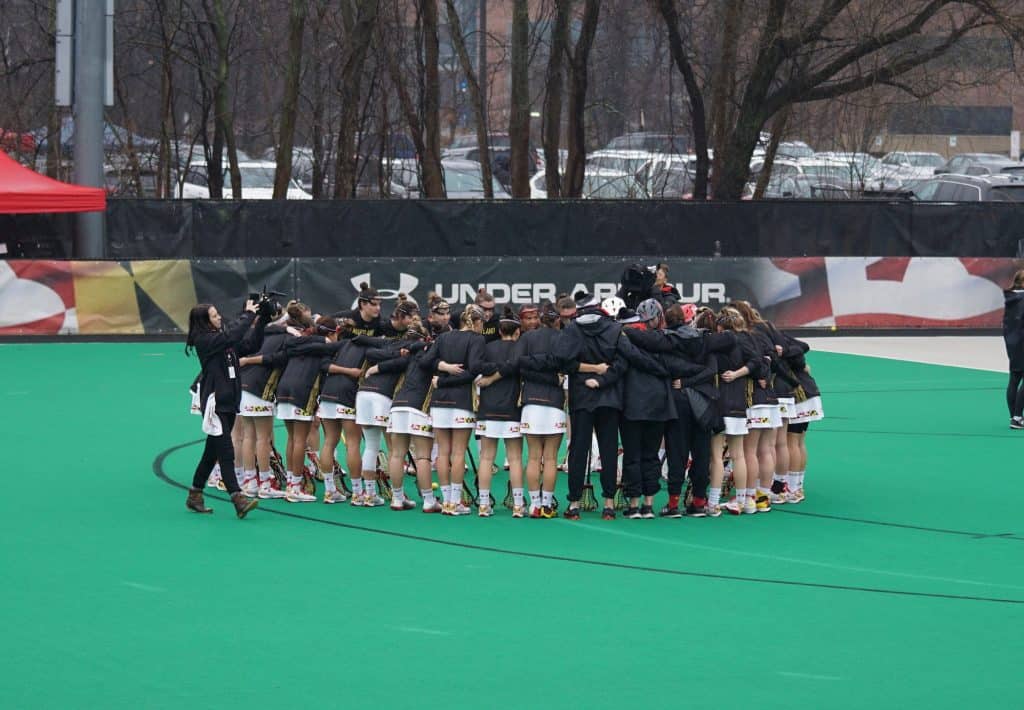Using DISC to Create high-performance Teams
Great teamwork happens when your athletes embrace the philosophy that they should be the best person for the team rather than the best person on the team. In the selection process, athletes are competing brutally against each other in order to be selected. Once on the team, they are then expected to put the team first. This is quite a shift in thinking. However, if your athletes do not change their thinking, what is created is a non-united team – a team of individuals and this is not how you achieve team success.
This kind of team will fail to produce their best when it matters most. As coaches, we may or may not have a role in selecting our team. Regardless, every coach needs to understand the interplay of the different behavioral styles of different athletes on their team. This interplay is called Team Chemistry or Dynamics.
By just observing a team, it can be quite a challenge to accurately understand the diverse mix of these personalities and styles.
In this article we will give you a run down on how you can understand your team’s chemistry, how to create a great team, and how the different behavioral styles see each other and what makes for the perfect team dynamic. We will also show you an example of a team’s chemistry and the likely issues that would be created within this team.
By the end of this article we hope you will have a greater insight into why some teams work well and others can struggle to create peak performances.
How can you understand your Sports Team Chemistry?
To fully and accurately understand their team’s chemistry, coaches can turn to the AthleteDISC Profiling System. Once the individual athletes within your team have been profiled, we can then generate the Team Dynamics Report showing how the individuals combine as a team, the pattern of different styles of athletes, and key coaching strategies for the dynamic of the team. This tool is invaluable for you to understand your team’s dynamics, and you can read more in our article “The Importance of Profiling in Sport”.
Most teams fail due to “personality clashes” which are really just the differences in behavioral patterns. Simply put, behavioral patterns are your preferred way of doing things. However we can tend to get into the thinking of: “This is the way I do things, therefore I am right, and that person (who has a different way of doing things, and different behavioral pattern) is wrong.”
If these personality clashes are not resolved effectively they can derail seasons, and have a significant effect on morale.
Personality clashes are preventable and can be managed if the coach and team are aware of them and plan accordingly. Often we do a lot of work in the pre-season with coaches and athletes looking at what behavioral patterns are present and from this, what are some obvious clashes that might occur. This way everyone starts the season on the same page and is aware up-front that other behavioral styles exist in the team and that these may cause conflict. Athletes can then turn their thinking to: “Hey you’re different to me and that’s ok, because you can fulfill an important role on the team that I can’t”.
Watch Bo Hanson talk about Sports Team Chemistry
Creating Great Sports Team Chemistry
Some coaches assume any group can automatically be a team. This is not always the case. One of the biggest reasons teams misfire is because personality differences are ignored and left to erupt – usually during competition. In short, who’s selected on the team affects the team’s outcome.
Being strategic and having a thorough understanding of your athletes, their behavioral style, and the likely outcomes of these behavioral styles interacting (the Team Dynamics) will help to give your team the greatest chance at success. With this knowledge coaches can begin to understand likely team behaviors and the most effective way to coach the overall team. Coaches can also see where gaps are in the team’s diversity and can, where able and appropriate, recruit athletes of particular profiles to fill those gaps.
When coaches create a sporting team and employ their knowledge of the AthleteDISC behavioral styles, they can greatly improve the team’s chances for success. Coaches take into account the natural allies and antagonists among the styles and also how each style functions at each Stage of Team Development.
As mentioned above, the DISC model provides an extremely useful way to understand different styles of athletes and how they contribute to the team. Below are two helpful diagrams showing the four quadrants of DISC and the likely conflicts between each style.


For example, Influence styles (I’s) often see Conscientious Styles (C’s) as overly-analytical and rule governed. Dominance styles (D’s) might sooner die than have to continually wait on the more considerate and slower-paced style of their Steadiness team members (S’s). Conscientious styles, while often drawn to Steadiness styles, have difficulty understanding the Interactive style’s lack of focus or the Dominance style’s impatience. And Steadiness styles only wish everyone was as amiable and tolerant as they are. For more information on how the different styles interact, you may like our article on The Team and the Tension Among the DISC Styles.
So while the potential for conflict is always there, it needn’t become the reality. In creating a team, think about the athletes you are adding and monitor how they function during the group’s evolution. That way you’ll not only make the best possible use of the strengths of each team member, you can help create a whole that’s much larger than the sum of the parts, a Synergistic team.
The Perfect Sports Team Chemistry
So what does the “Perfect Team Dynamic” look like? What dynamic of athletes will guarantee success? A normal population is usually made up of 9% Dominance Styles, 27% Influence Styles, 52% Steadiness Styles, and around 12% Conscientious Styles. These percentages do not mean that a team must have this exact dynamic to be successful. In fact we have never seen a team with the exact “perfect dynamic”. Instead we have seen many teams become highly successful with too many D’s, or I’s or S’s or C’s. Or too few D’s, or I’s or S’s or C’s. The key for success is being aware of what is missing from your team, and adapting for this.
Watch Bo Hanson talk about The Perfect Team Dynamic, Diversity and DISC!
Example Sports Team Chemistry
Discovering what behavioral styles you have on your team is easy. When each member of your team completes an AthleteDISC Profile we are able to generate a Team Dynamics Report. Within this report, one of the representations of the team is how each person plots on the four quadrant model like the example below (note the Team Dynamics is an 18 page report with considerable information about the team, below is an example of one of the charts within the report).
In the above Team Dynamics Profile example, a coach can see that there are two different percentage measures in each Behavioral Style. The norm group is a measure of the percentages of team members that theoretically form a healthy amount of a certain behavioral style, discussed in the previous section. The other percentage is Your Group. This is the actual percentage of the behavioral styles that exists in your team.
The first aspect to look at in the Team Dynamics Profile is the ‘norm group’ versus your group percentage. We ideally want these percentages to map relatively similar to the theory percentages. They will not be identical, but successful teams tend to have healthy diversity within the behavioral profiles. If one behavioral style is heavily oversupplied, then you may have difficulty assigning roles as your athletes will all want to do the same thing.
Dominance Style Chemistry Example
In the above example, the first team issue to notice is the lack of D’s (Dominance Style). In teams, D’s provide a sense of urgency, a pace setting style of leadership, a love of a challenge, a strong results focus and a “whatever it takes” style of play. What do you think may be the outcome for a team that is missing these qualities? If you have very few D’s you need to be aware that your team may lack that killer instinct, the athletes who just want to win. Think about team members who naturally want to assume a leadership role, what profile do you think they are most likely?
By the same token if you were to have too many D’s in your team, it may be a case of too many chefs and not enough cooks. A team with too many or too few D’s can still be successful, the team and the coach just has to learn how to handle the issues that may arise from having this dynamic in their team.
Influence Style Chemistry Example
In the example, the second observation is that there are lots of I’s. Influence (I) style behaviors are fast paced, people -orientated, motivated by change and fun, are impulsive with their choices, will be interested in the social side of sport as well as the need for individual recognition. As well, I’s are talkative types who tend to wear their heart on their sleeve more so than the other styles.
With roughly twice as many I’s as the theory suggests is required, this example team will likely struggle at times to switch on and be focused. There may be a lot of off topic communication and if their coach does not provide excitement and fun elements at training, then the Influence style athletes will start to disengage. On the other hand, if the team was to have a lack of I’s, the team can be missing the athletes who provide the natural enthusiasm energy and atmosphere.
Steadiness Style Chemistry Example
The other factor in this team is that their Steadiness style (S) is under represented. S styles are described as the ultimate team player; they don’t play an individual game. They listen, are observant of others, portray tolerance, are highly amiable and generally will naturally put the team before themselves. Some describe S’s as the glue that binds the team together. What do you think may happen in this team given that there are not enough of the S’s? If S’s are underrepresented you will be missing the supportive athletes who really help everyone else on the team to do a great job.
Conscientious Style Chemistry Example
Finally, the Conscientious style. You will notice that this style is over represented in the Example with 25%. Conscientious styles (C’s) are rule guided, motivated by structure and systems being effective and efficient, stubborn and inflexible to change unless there is sufficient evidence such as facts and figures to support the change. They are also likely to be highly conscious of quality above all else, are interested in the “right” process before the result and are more a thinker than a feeler who will be reticent to express themselves. Whilst fantastic people to have on a team, they can often be prone to preferring to work alone. So knowing this what impact do you think this will have on the team? Also consider this, with the particularly high representation of I’s?
On the same note if a team had an under representation of C’s, you could struggle with implementing game plans. Instead as soon as your team headed out to compete, the game plan would be forgotten as the other styles would try different things without the C’s style athlete’s ‘reining them in’.
Summarizing Sports Team Chemistry
I have noticed when teams significantly under-perform there are almost always critical behavioral issues (personality clashes) that were never addressed. Sport is tough enough. Coaching is one of the most challenging roles a person can have.
In a recent survey of elite coaches from a diversity of sports, coaches rated the three most challenging aspects of their roles:
- 50% rated “Understanding individual athlete’s personality and how to best motivate them”
- 46% rated “Personal life balance – managing sport, career, home and social life”
- 31% rated “Sports Team chemistry and managing relationships within the team/squad”
Don’t make your job any harder by neglecting this critical aspect of team performance. Use the knowledge available with Athlete Assessments and the AthleteDISC to assist you to make better informed decisions.
Team Profiling gives us concrete indications as to how teams bond, interact and ultimately perform. Obtaining accurate information on sports team chemistry is easy and inexpensive using the AthleteDISC Profiling system.
Watch Bo Hanson talk about the Importance of the DISC Model!
Where to from here?
If you’re looking to create better team chemistry, take action now! Be sure to check out our recommended articles below, or to understand more about using Athlete Assessments AthleteDISC, CoachDISC and Sport ManagerDISC and how they contribute to team building and management click here.
At Athlete Assessments we’re here to provide you with excellence in service and to help you be your best. If there is anything we can do to be of service, don’t hesitate to contact us.
Recommended Articles
In a team it can be difficult to understand why tension can develop between some athletes, yet other athletes gel from start. In this article we discuss the team tension between the different DISC styles in a team environment, due to their different priorities in pace and relationships.
Research shows effectively communicating goals of the team is critical, as a lack of understanding can lead to athlete disengagement with the team.







